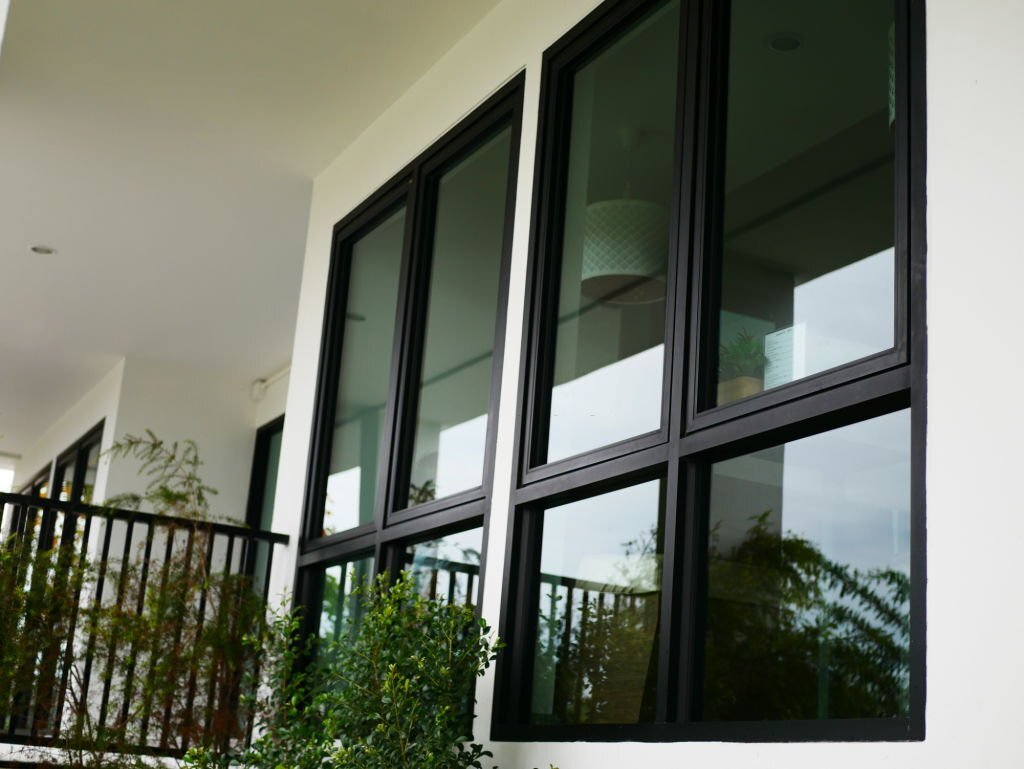Discover the Long-Term Perks of Residential Window Tint for Your Home
Wiki Article
Just How Residential Window Tinting Enhances Your Home's Power Efficiency
Residential window tinting offers a compelling option for house owners seeking to boost energy efficiency within their home. By applying specialized movies to windows, it effectively reduces warm transfer, thus maintaining indoor temperature levels and minimizing the demand for excessive home heating or cooling. This not only reduces energy usage but likewise gives a much more comfortable setting by reducing glow. Comprehending the subtleties of how tinting works and picking the appropriate type for your home can be essential. Oddly, what elements should one think about prior to making this financial investment?Understanding Window Tinting
Recognizing home window tinting is necessary for house owners seeking to improve both comfort and energy performance in their home. Residential Window Tint. Window tinting includes the application of a slim movie to the inside or outside surface area of glass windows. This film can considerably regulate the quantity of sunshine and warmth that gets in a home, thus affecting interior climate problemsThere are various types of window tinting movies offered, each with distinctive properties. The performance of home window tinting is often determined by its Visible Light Transmission (VLT) portion, which shows just how much light can pass via the movie.
Benefits of Power Efficiency
Window tinting not only boosts looks however additionally plays a considerable function in boosting power effectiveness within household rooms. By minimizing heat transfer through windows, colored movies produce a much more steady indoor environment, which can bring about significant reductions in energy usage for cooling and heating. This energy effectiveness converts right into reduced utility expenses, offering house owners with considerable long-lasting financial savings.
In addition, window tinting enhances the convenience of living rooms. By minimizing glare and obstructing unsafe UV rays, tinted home windows produce a more positive environment, which can cause enhanced health for residents. The defense against UV rays likewise assists maintain furnishings and flooring from fading, adding to the longevity of household products.
How Tinting Works
Tinting films run with a combination of advanced materials and innovations developed to regulate the amount of solar power going into a home. Mainly composed of polyester, these films typically incorporate ceramic or metal particles that reflect and absorb warmth. This double ability permits them to significantly reduce the penetration of ultraviolet (UV) rays and infrared radiation while allowing visible light to pass through.The effectiveness of home window tinting is measured by its solar heat gain coefficient (SHGC), which indicates just how much solar power is transferred via the home window. Reduced SHGC values are more suitable as they signify better heat being rejected. Additionally, home window tints can include a variety of tones, enabling house owners to customize their aesthetic preferences while enhancing energy efficiency.
Moreover, these movies serve as a barrier, avoiding warm loss during cooler months by mirroring interior warmth back into the home. This thermal insulation effect complements the cooling benefits gained during warmer months, adding to a well balanced interior environment year-round. By managing solar energy properly, household home window tinting not only improves convenience yet additionally plays an important duty in lowering energy intake and reducing utility bills.
Picking the Right Color

There are different sorts of home window movies available, including dyed, metalized, and ceramic. Colored movies are cost-efficient go to this site but may have restricted toughness. Metalized films provide far better warmth being rejected yet can interfere with electronic signals. Ceramic movies give outstanding warmth control without compromising exposure and are very sturdy, making them a popular option.
Noticeable light transmission (VLT) is an additional crucial element, as it shows the quantity of all-natural light that can go through the tinted glass. Property owners ought to choose a color with a VLT that enhances their lights choices while still giving ample glow reduction.
In addition, evaluating the solar warm gain coefficient (SHGC) can assist identify how well a tint can block heat from sunlight. A reduced SHGC shows far better warmth control, inevitably boosting power performance.
Setup and Upkeep Tips
Proper additional reading setup and upkeep are crucial parts in maximizing the benefits of property home window tinting. Experts additionally use specialized techniques and tools, which can boost the resilience and performance of the tint.Following installment, maintenance is crucial click for info to prolong the life of the home window movie. It is recommended to wait at the very least one month prior to cleaning the tinted windows to enable the glue to treat totally. When cleaning, utilize a soft fabric and a mild, ammonia-free cleaner to avoid damaging the film. Stay clear of abrasive products that could scrape the surface area.
Dealing with these issues quickly can avoid further damages and keep energy efficiency. By sticking to these installment and upkeep suggestions, property owners can ensure their home window tinting proceeds to offer substantial power cost savings and comfort for years to come.
Final Thought
In final thought, household window tinting offers as an effective remedy for improving power efficiency within homes. By minimizing warmth transfer and blocking unsafe UV rays, window movies contribute to reduce power intake and improved interior comfort.Home window tinting includes the application of a slim movie to the interior or exterior surface of glass home windows. By reducing heat transfer with home windows, colored films produce an extra secure indoor climate, which can lead to considerable decreases in power usage for home heating and air conditioning.The effectiveness of window tinting is determined by its solar warmth gain coefficient (SHGC), which shows how much solar energy is transferred with the home window. By taking care of solar power effectively, domestic home window tinting not just boosts convenience yet additionally plays a vital role in decreasing energy usage and reducing energy expenses.
By minimizing warmth transfer and blocking hazardous UV rays, window films contribute to lower power intake and enhanced indoor comfort.
Report this wiki page